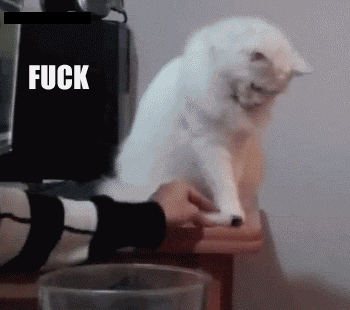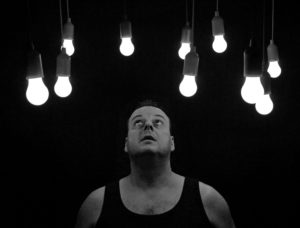 I have a confession to make: I haven’t meditated in weeks.
I have a confession to make: I haven’t meditated in weeks.
It took me a while to figure out why I’d stopped. The slowdown in my routine was so gradual that I didn’t realize it was happening at first, but there have been some changes in my life recently that have lead to me feeling less of a need to meditate regularly.
Change #1: No Caffeine
I never drink coffee or caffeinated tea, but for a while there I wasn’t eating or drinking anything caffeinated at all. Even small amount of caffeine have been known to make me feel anxious, so I’ll often go several weeks or even longer without having any chocolate at all.
When my mind is calm, I don’t think about meditation as often as I do when I need to consciously clear out my thoughts.
Now that I’ve started to occasionally eat chocolate again as a delicious result of post-holiday sales and my local grocery store suddenly carrying a whole bunch of new chocolate bars that I’ve only begun to start tasting, I’m expecting to mediate again more regularly in the near future.
Change #2: Nice Weather
Spring has arrived in Toronto, so there have been some beautiful days here over the last few weeks. Meditation is a tool I’m more likely to use during times of the year when it’s too hot or cold to spend much time outdoors at all. When the weather is warm and dry, I tend to take a long walk outside instead of sitting at home.
Nothing clears my mind more quickly than being outdoors. There are many quiet, shady streets in Toronto to explore, and I love walking up and down them with no particular destination in mind. Not only do you meet the most interesting people and places this way, it’ll show you a side of the city that is rarely seen elsewhere. Some of the buildings here have been around since the city was in its infancy, and they have stories to share about that time period in history if you know how to listen and who to speak to about them.
The peacefulness of these walks is wonderful as well. When you don’t have to think about crossing busy streets or dodging folks who stand on the street corner and try to talk you into something, it’s easy to let your legs carry you down the street and soak in all of the beauty around you.
This leads me to a question that has been rolling around in my mind for a long time. Can walking be thought of as a non-traditional form of mediation? I’ve read articles that agree that it can, and others that don’t think this habit is disciplined enough to count as a meditation session. What I can say is that both meditation and walking give me similar benefits.
- They clear my mind.
- If my mind can’t be cleared, they help me to accept the thoughts that stubbornly stick around.
- They help me to live in the present instead of the past or the future.
I’ll leave it up to the experts to decide if long walks can be a form of mediation. For now, I’ll accept the peace that I find in these activities and leave it at that.
Change #3: Boredom
There’s a fine line between falling into a comfortable routine and beginning to feel bored when you do the same things over and over again.
As much as I enjoy the benefits of meditation, sometimes I honestly do need a break from it. Doing it daily would be like doing the same exercise routine every single day. Some people may be perfectly capable of doing that without ever growing bored or wanting a chance to rest, but I need to switch up my routines sometimes.
Taking a break from something – even if it’s something I deeply love that I know is good for me – makes me feel more committed to going back to it after I’ve had a chance to try other forms of relaxation.
 Try, Try Again
Try, Try Again
Now that I’ve had the chance to mull over it, I don’t think of my breaks from meditation as a failure. I’ve had an on-and-off again relationship with this practice for years, and I’ve more or less come to accept the fact that I will occasionally stop doing it for a while.
My meditation breaks are gradually growing shorter and less frequent, though, and that makes me happy. I’d like to imagine that this means my meditation practices are changing my brain for the better.
Think of it like training yourself to eat a healthy diet or exercise regularly. There will be times when you fall off the wagon, so to speak, for any number of reasons. You might become sick or injured and be physically unable to exercise for days, weeks, or months. Other things going on in your life might demand so much attention that you don’t have the energy to juggle it all for a while. You might be travelling and have trouble finding healthy food while you’re out of your element.
All of that is perfectly normal. Such a routine might not work for everyone, but it does work for some of us. Rather than focusing on what happened yesterday, think about what you’re going to do today. The nice thing about meditation is that no one is keeping track of how often you do it, and there’s no reward or punishment for doing it a specific number of times a week.
There is always another chance to try again. This is why I’ve returned to this practice so many times after taking a break.

 One of the things I find most challenging about practicing mindfulness is doing it when I’m angry. While I’m not the kind of person who loses their temper easily, I do have a tendency to ruminate on whatever is making me mad beyond the point where such an act still remains useful.
One of the things I find most challenging about practicing mindfulness is doing it when I’m angry. While I’m not the kind of person who loses their temper easily, I do have a tendency to ruminate on whatever is making me mad beyond the point where such an act still remains useful.
 This is by far one of my favourite things about remembering to be mindful when I’m pissed off about something.
This is by far one of my favourite things about remembering to be mindful when I’m pissed off about something. Something fascinating has been happening to me recently on Twitter. Social media definitely isn’t the first place I’d expect to grow more mindful, but I’ve been learning more about what it means to live in the moment when I use this particular site for several different reasons.
Something fascinating has been happening to me recently on Twitter. Social media definitely isn’t the first place I’d expect to grow more mindful, but I’ve been learning more about what it means to live in the moment when I use this particular site for several different reasons. Reason #3: Every Tweep Can Teach You Something
Reason #3: Every Tweep Can Teach You Something Both of these terms regularly get tossed around on this blog. I recently realized that I’ve never defined them or talked about the subtle differences between them. It’s high time to change that!
Both of these terms regularly get tossed around on this blog. I recently realized that I’ve never defined them or talked about the subtle differences between them. It’s high time to change that! You Can’t Have Meditation without Mindfulness
You Can’t Have Meditation without Mindfulness I’ve been thinking about mindfulness a lot lately. It’s a habit that needs to be built up and reinforced over a long period of time. Mindfulness is not the sort of thing that you can achieve in an hour, a day, or a week.
I’ve been thinking about mindfulness a lot lately. It’s a habit that needs to be built up and reinforced over a long period of time. Mindfulness is not the sort of thing that you can achieve in an hour, a day, or a week. Injuries, Pain, and Illnesses
Injuries, Pain, and Illnesses Stage 1: Confusion
Stage 1: Confusion Stage 2: Boredom
Stage 2: Boredom Stage 3: Thoughtlessness
Stage 3: Thoughtlessness Stage 4: Peace
Stage 4: Peace As you might have already guessed, I am not a huge fan of this pastime. There is nothing relaxing to me about being surrounded by so many strangers in such a loud, bright place whose only purpose is to sell things to you that you don’t even necessarily need.
As you might have already guessed, I am not a huge fan of this pastime. There is nothing relaxing to me about being surrounded by so many strangers in such a loud, bright place whose only purpose is to sell things to you that you don’t even necessarily need. This time I ignored my urge to think about the background noise. Instead, I closed my eyes and let it all wash over me. It felt sort of like floating down a river. You can’t control where the current goes, but you can choose to relax and allow it to carry you downstream.
This time I ignored my urge to think about the background noise. Instead, I closed my eyes and let it all wash over me. It felt sort of like floating down a river. You can’t control where the current goes, but you can choose to relax and allow it to carry you downstream. I was surprised by how little I enjoyed the experience of walking through the mall while trying to clear my mind. After thinking about it, I suspect it was because there weren’t any signs of nature there. Trees, bushes, flowers, and small animals are soothing to me. I was also so busy trying to avoid running into other people that it was difficult to keep my mind clear of thoughts.
I was surprised by how little I enjoyed the experience of walking through the mall while trying to clear my mind. After thinking about it, I suspect it was because there weren’t any signs of nature there. Trees, bushes, flowers, and small animals are soothing to me. I was also so busy trying to avoid running into other people that it was difficult to keep my mind clear of thoughts. We’re quickly sliding into the busiest time of year for retailers and shoppers alike.
We’re quickly sliding into the busiest time of year for retailers and shoppers alike. Since I started using it, my average resting heart rate has gone down a little bit. I’ve also been feeling more peaceful than I was before I began this habit.
Since I started using it, my average resting heart rate has gone down a little bit. I’ve also been feeling more peaceful than I was before I began this habit.